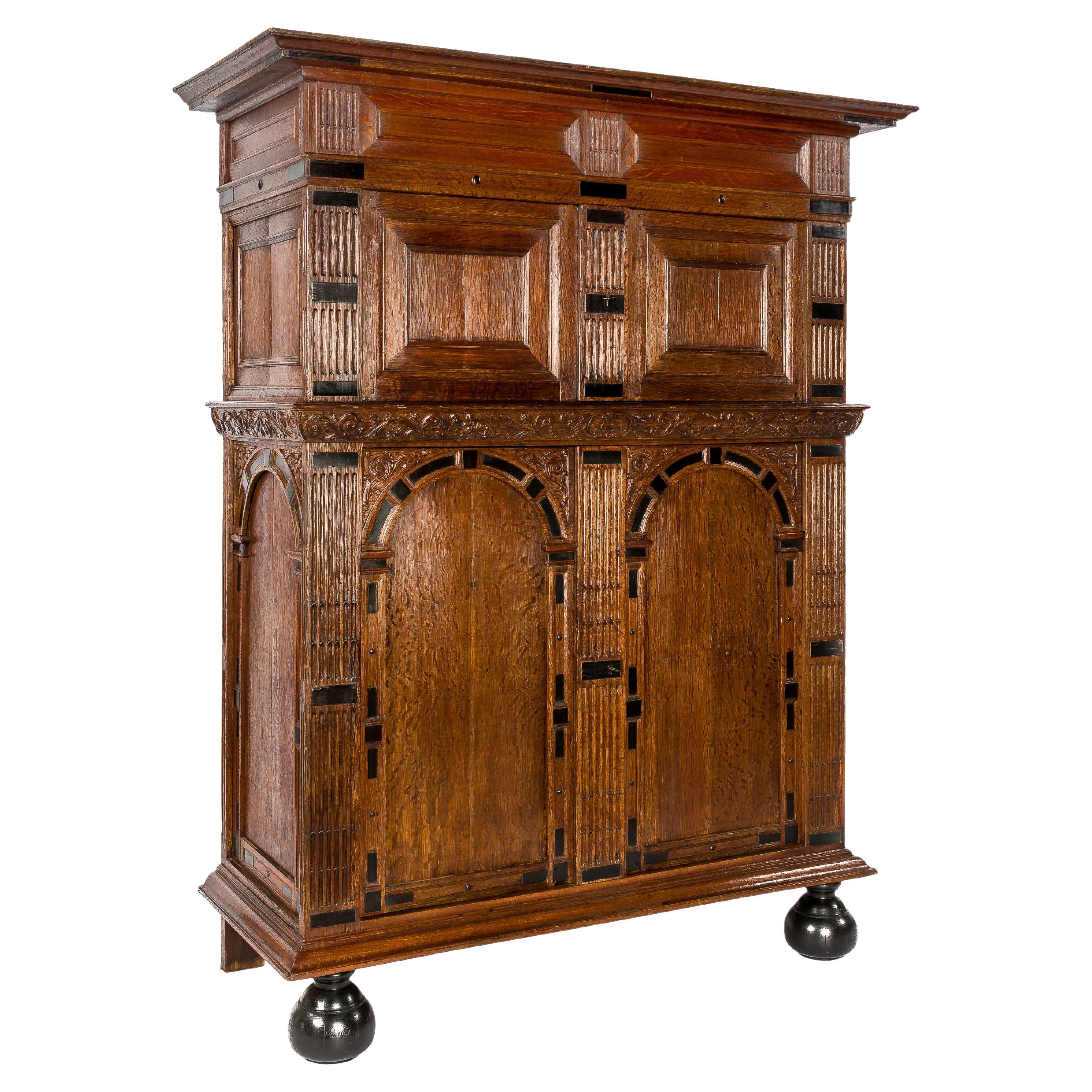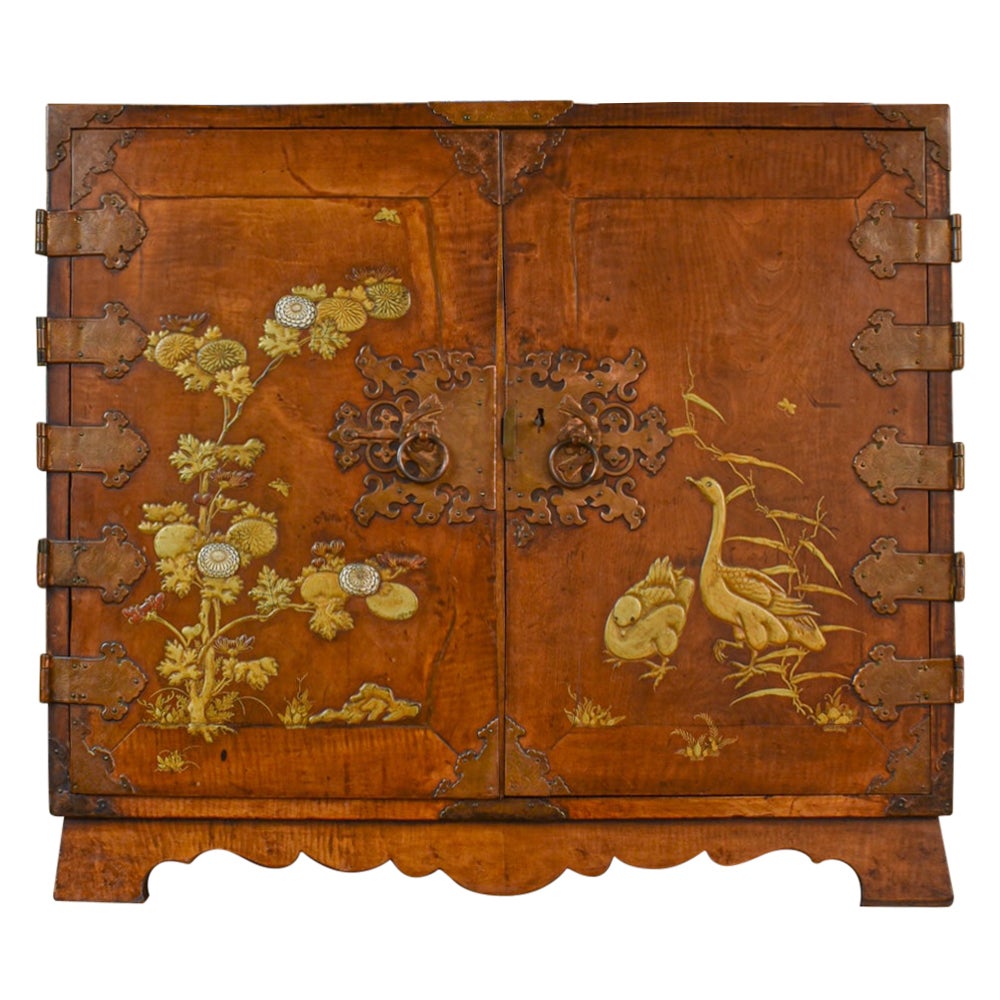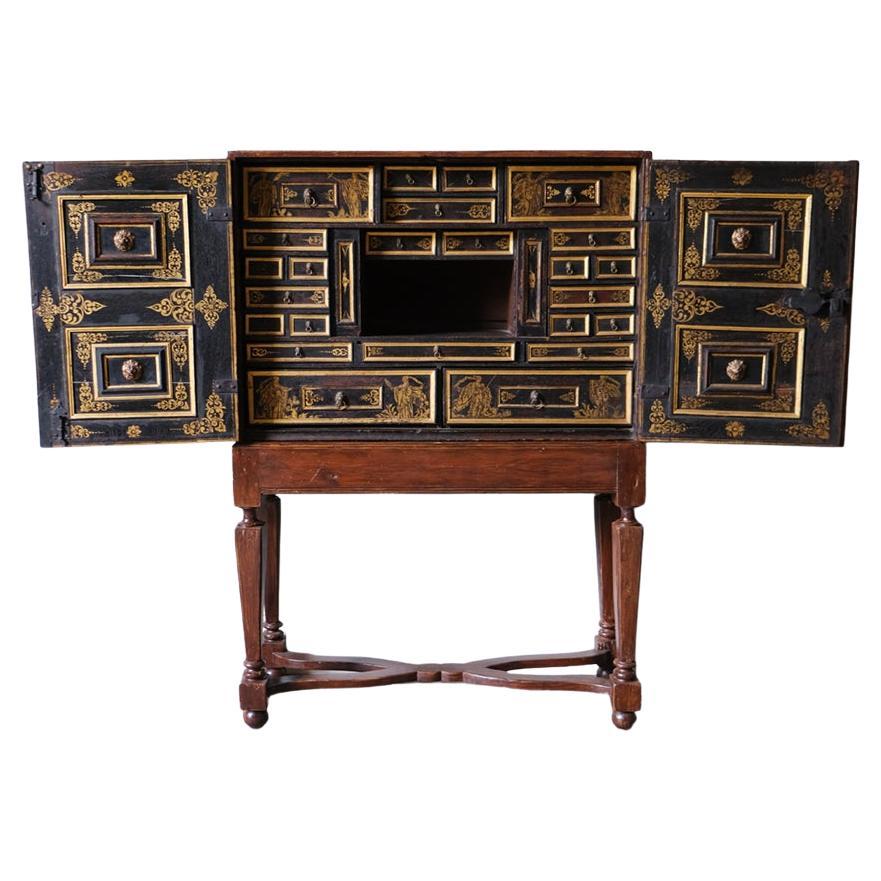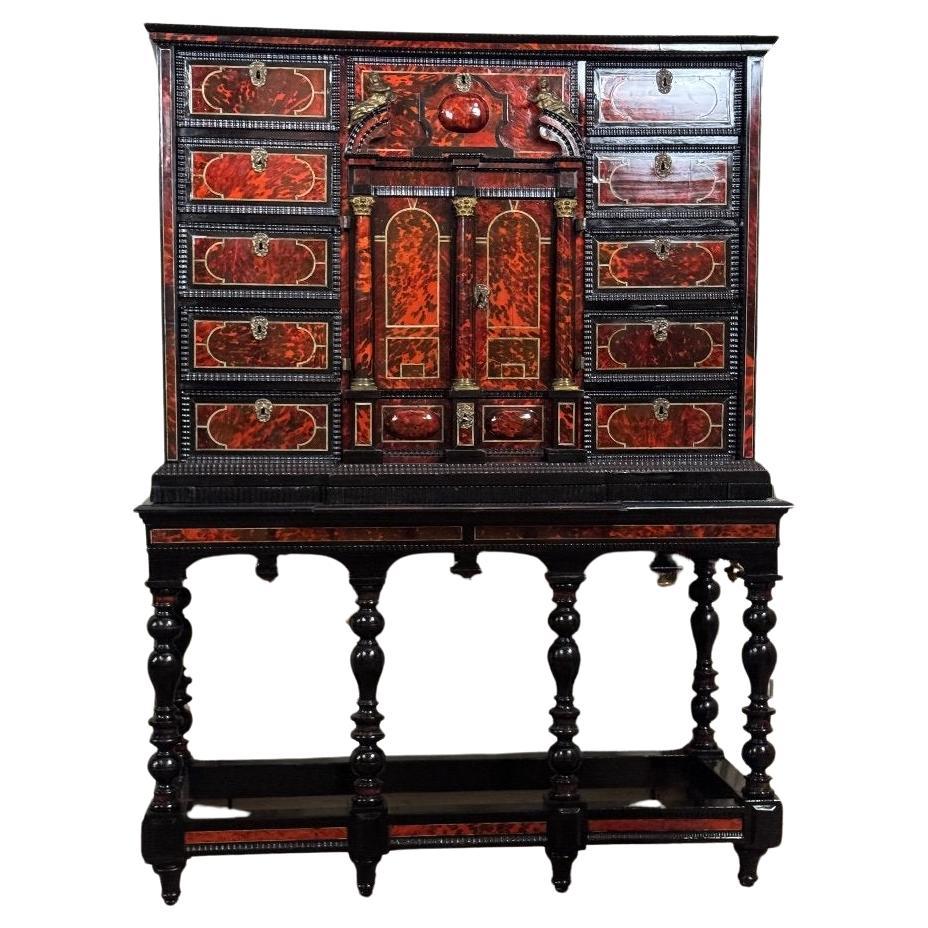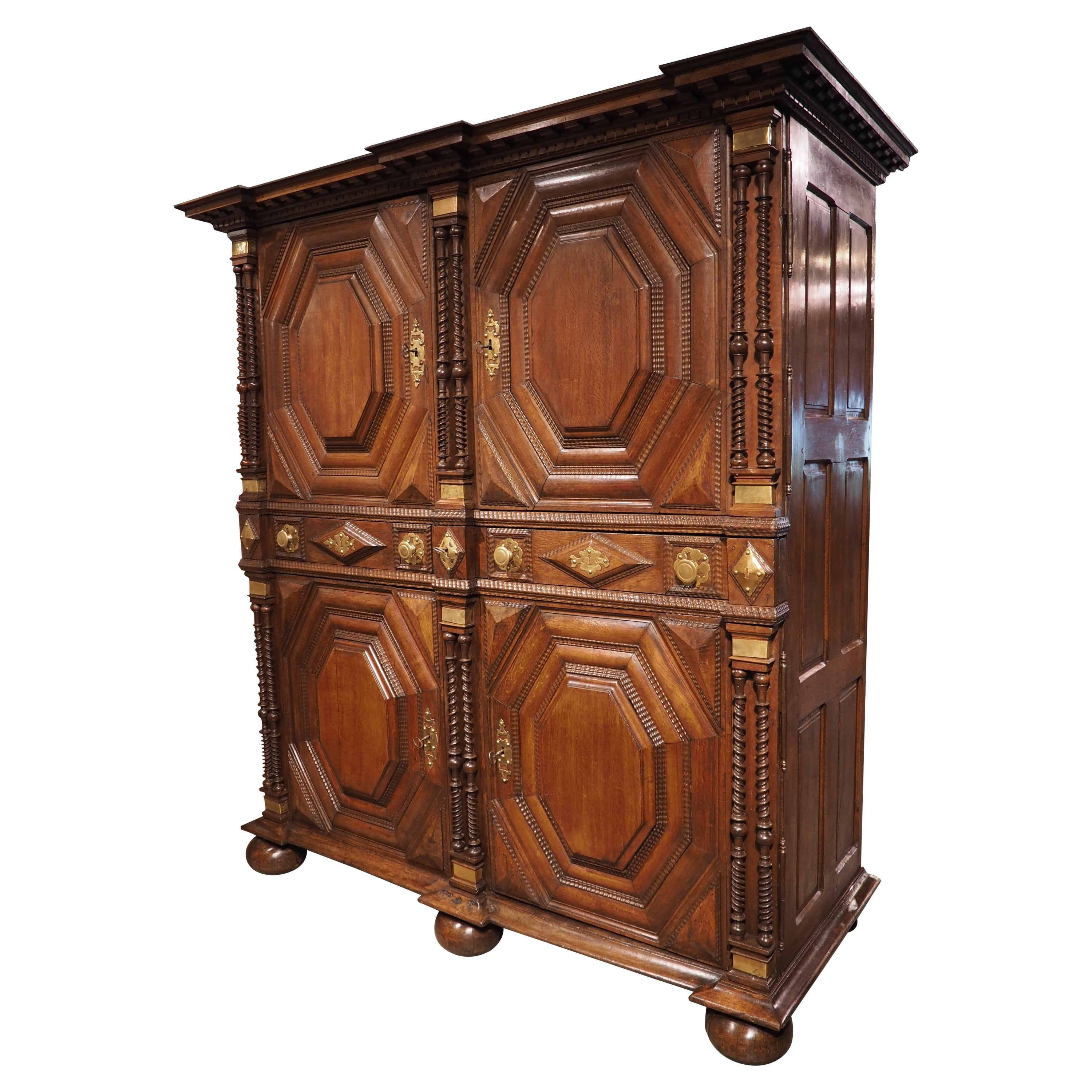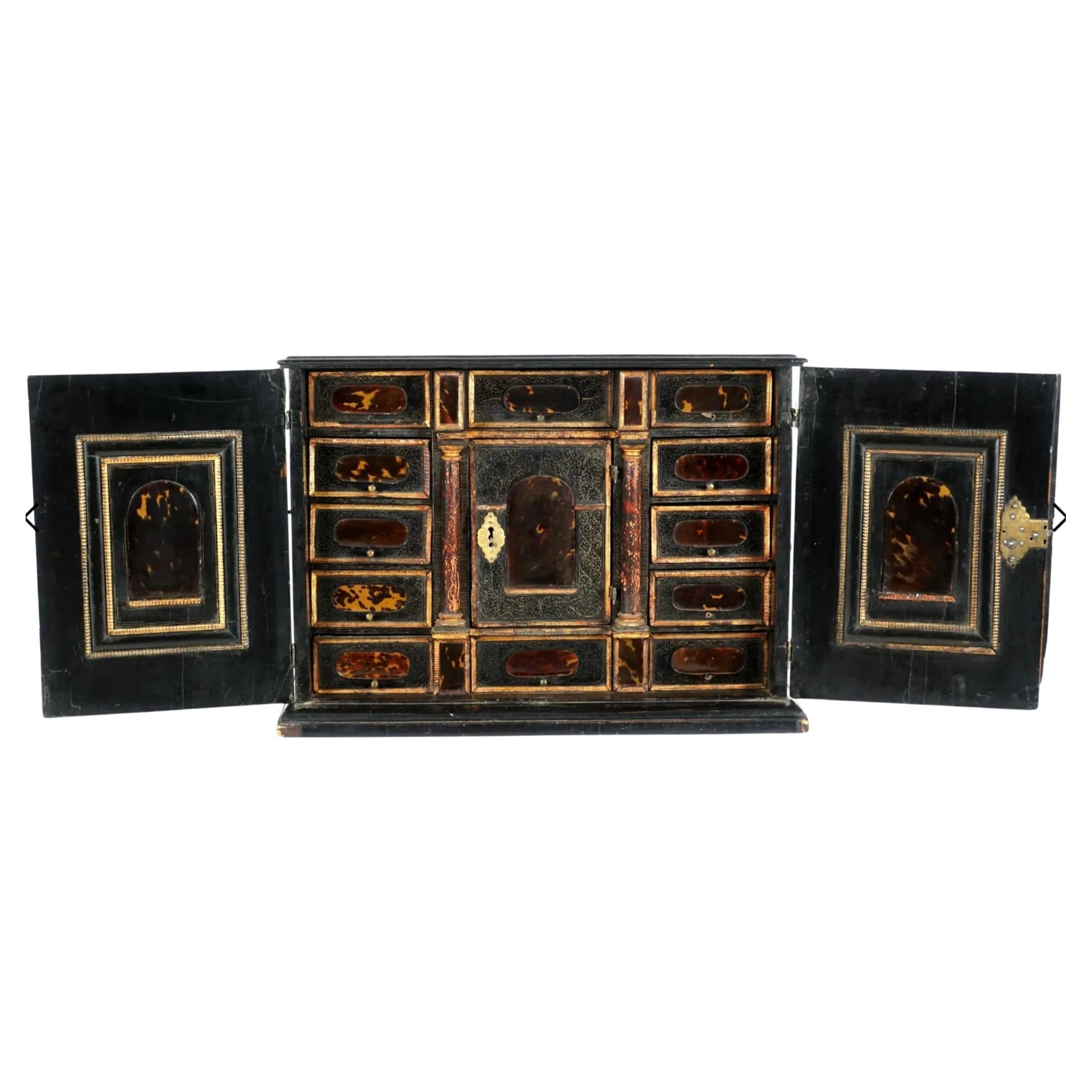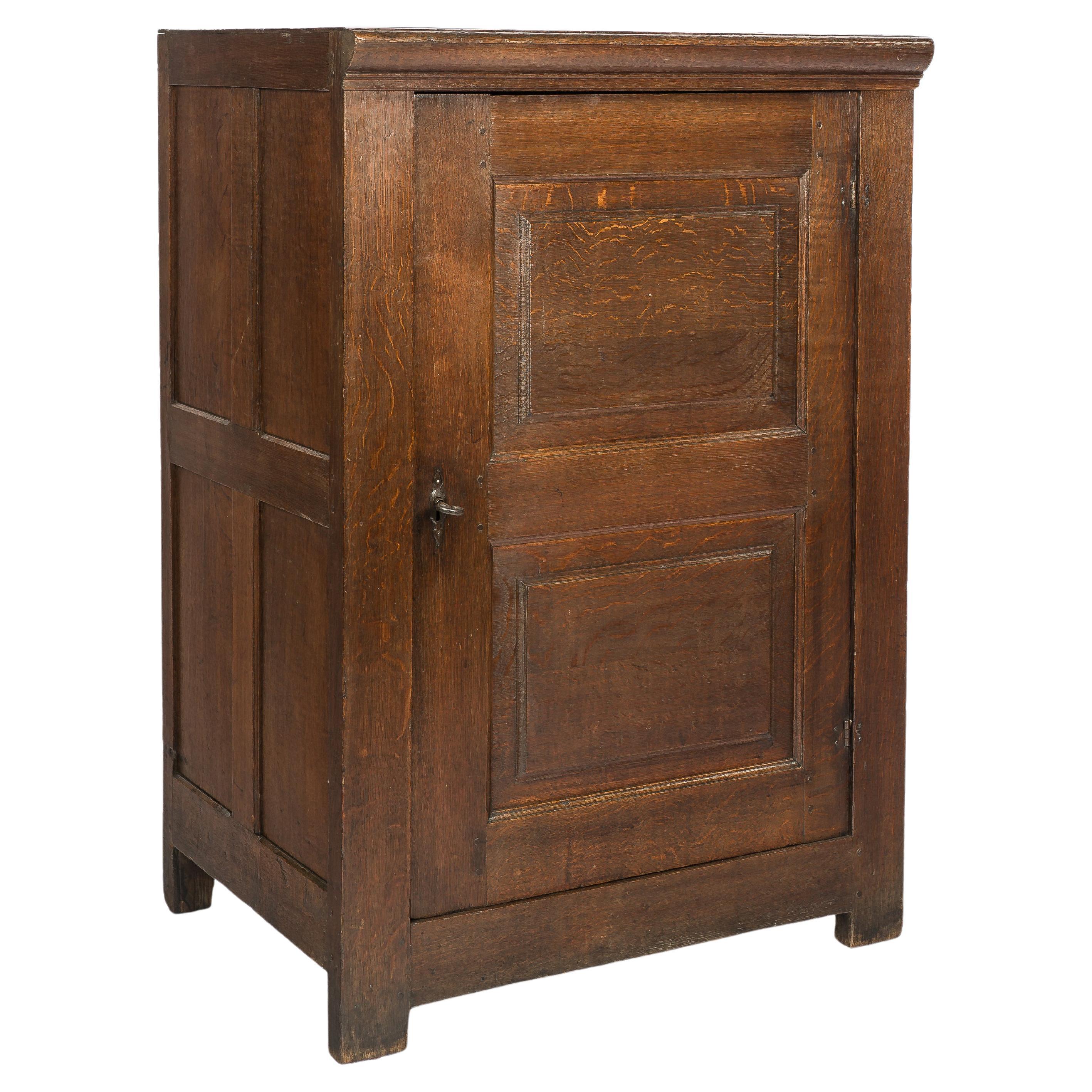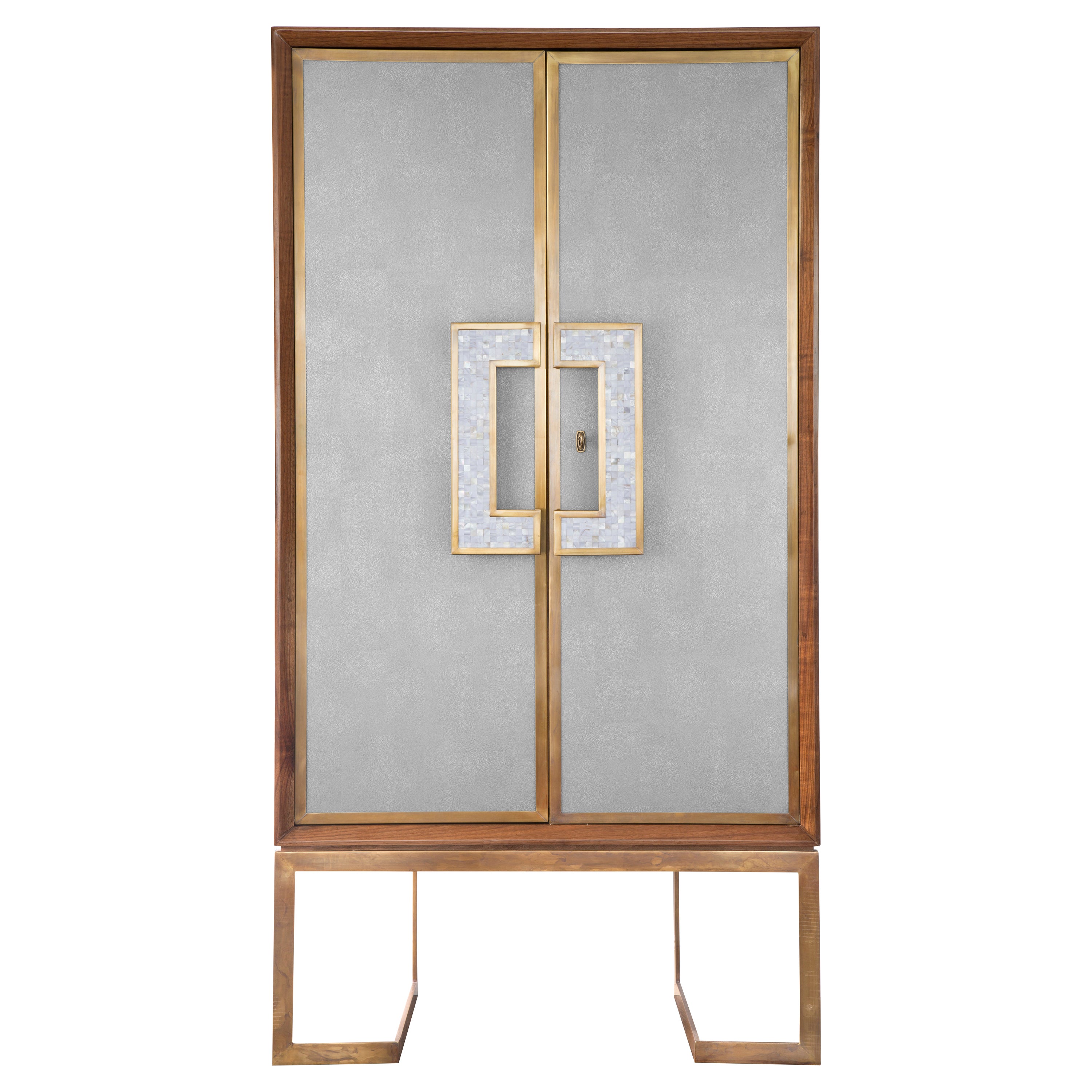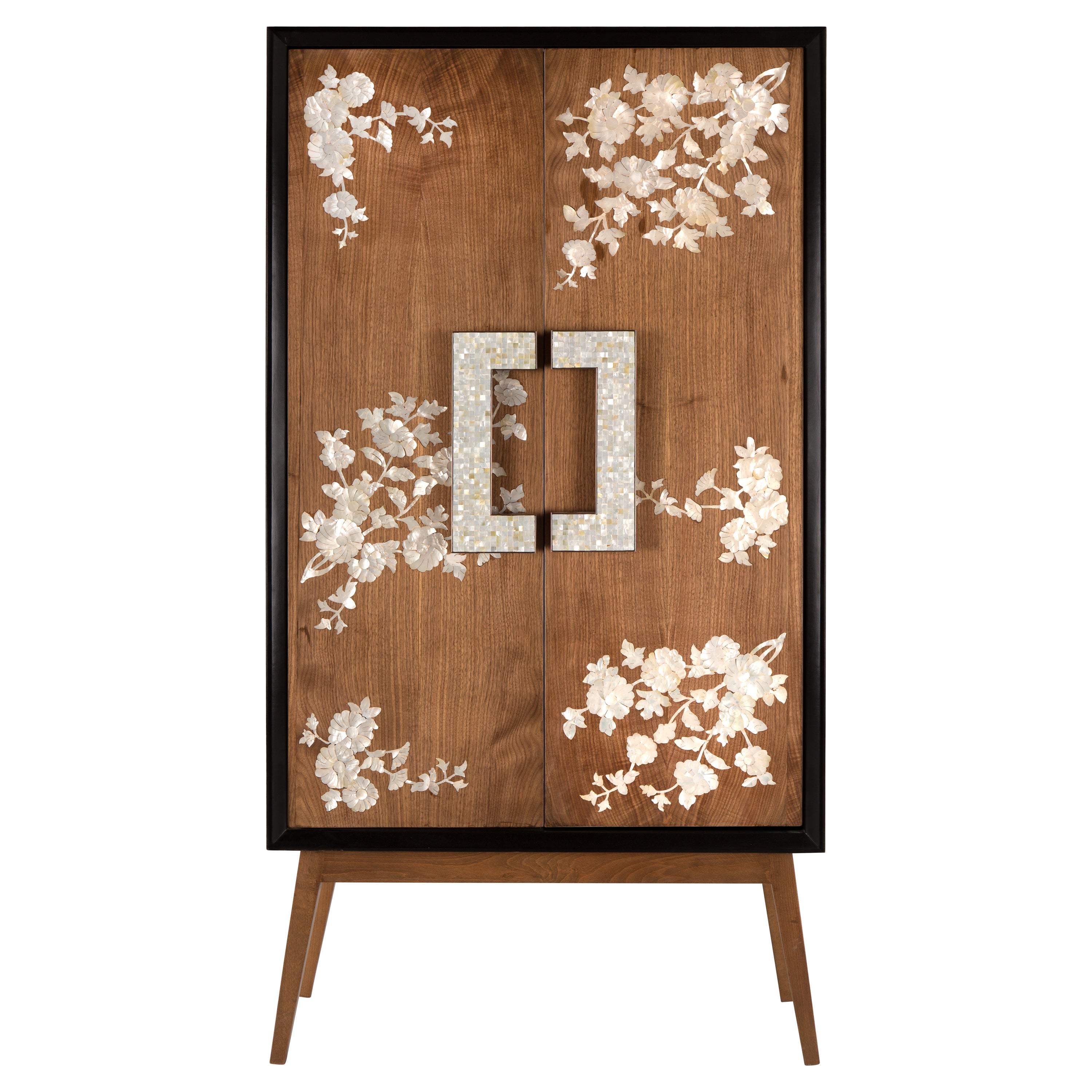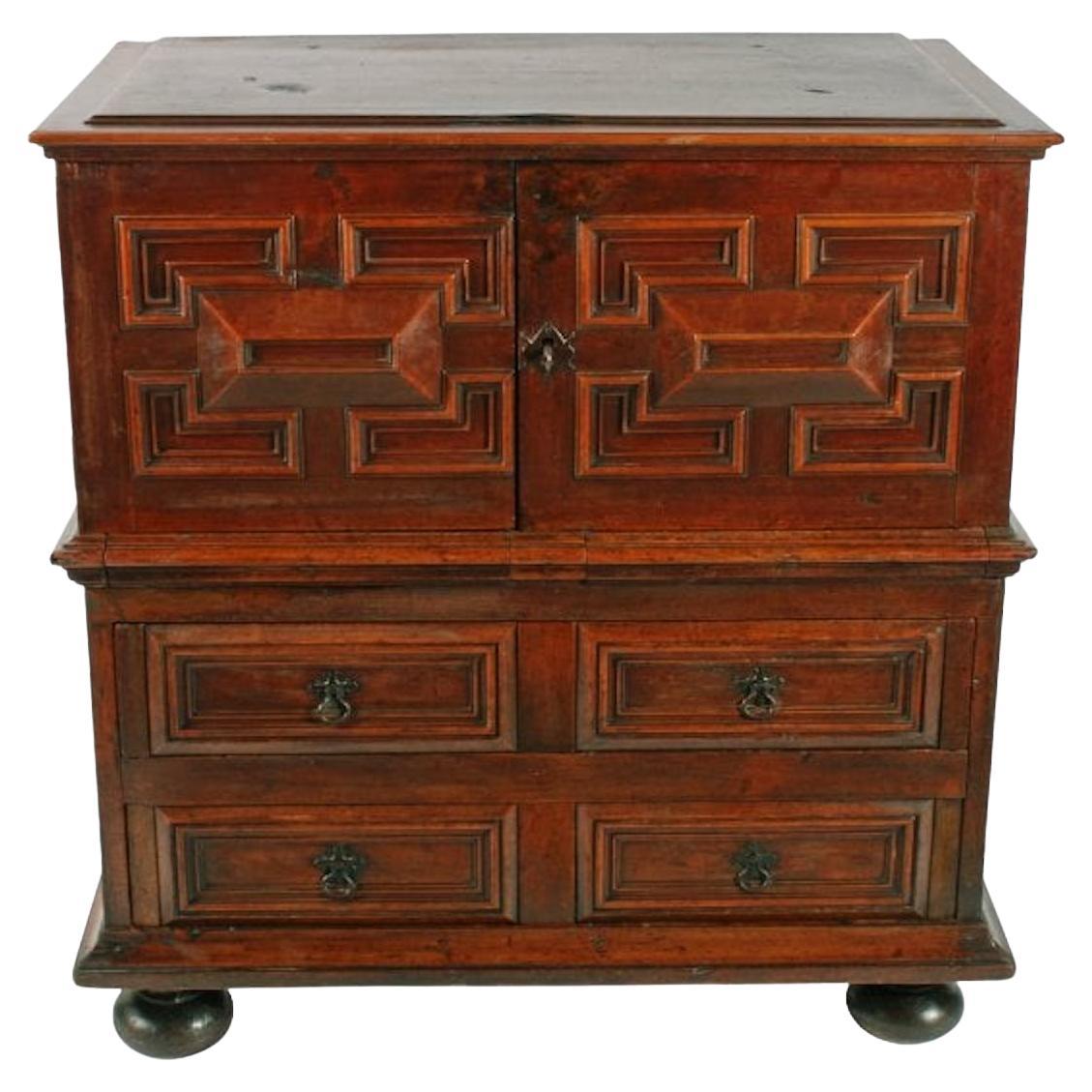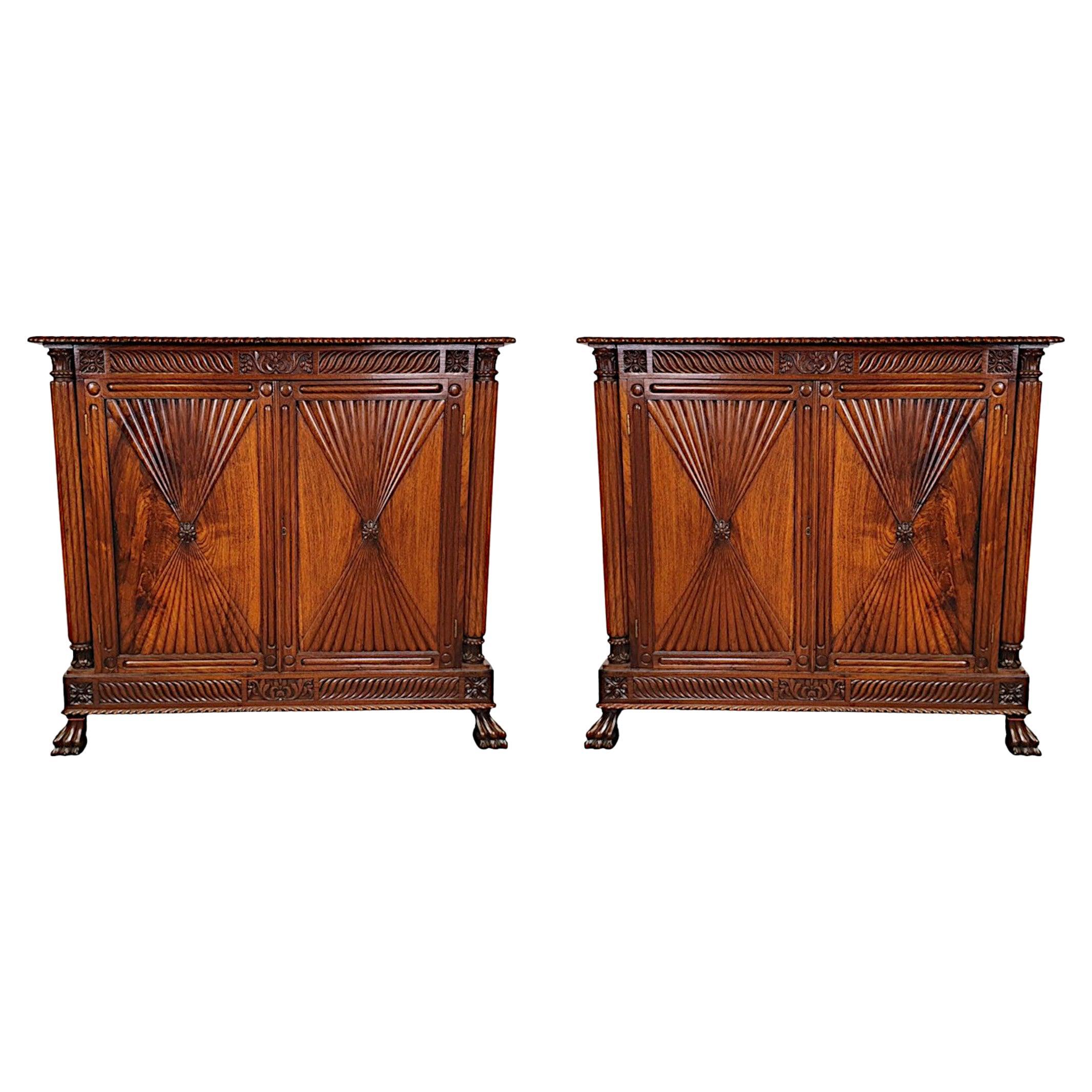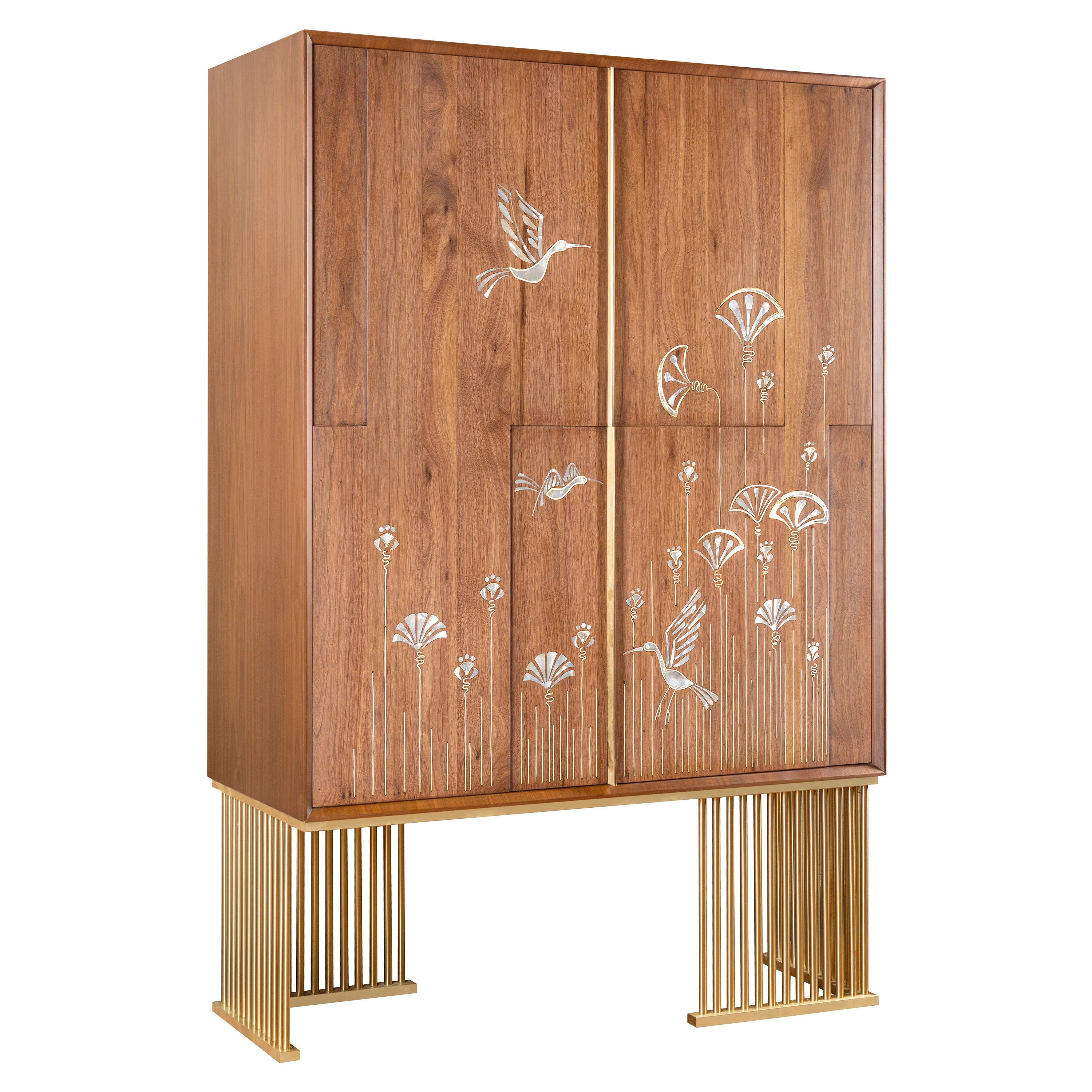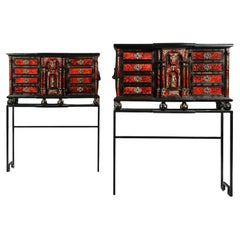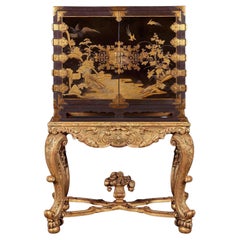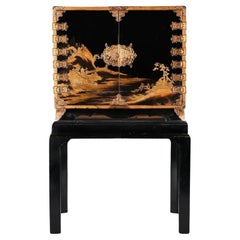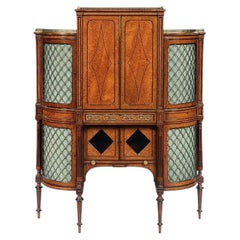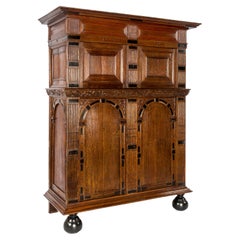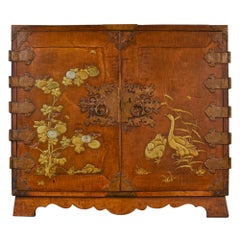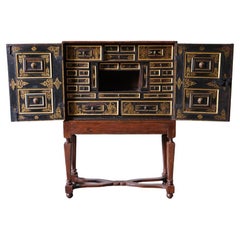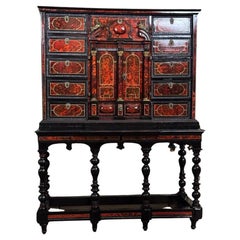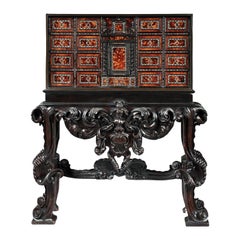
Rare 17th Century Neapolitan Ebony Tortoiseshell and Mother of Pearl Cabinet
View Similar Items
Want more images or videos?
Request additional images or videos from the seller
1 of 12
Rare 17th Century Neapolitan Ebony Tortoiseshell and Mother of Pearl Cabinet
$48,308.21List Price
About the Item
- Dimensions:Height: 59.75 in (151.77 cm)Width: 50 in (127 cm)Depth: 16 in (40.64 cm)
- Materials and Techniques:
- Place of Origin:
- Period:
- Date of Manufacture:circa 1670
- Condition:Wear consistent with age and use.
- Seller Location:Benington, GB
- Reference Number:Seller: 28561stDibs: LU1183227885492
About the Seller
5.0
Vetted Professional Seller
Every seller passes strict standards for authenticity and reliability
Established in 1969
1stDibs seller since 2015
126 sales on 1stDibs
Typical response time: 1 hour
Associations
LAPADA - The Association of Arts & Antiques DealersThe British Antique Dealers' Association
Authenticity Guarantee
In the unlikely event there’s an issue with an item’s authenticity, contact us within 1 year for a full refund. DetailsMoney-Back Guarantee
If your item is not as described, is damaged in transit, or does not arrive, contact us within 7 days for a full refund. Details24-Hour Cancellation
You have a 24-hour grace period in which to reconsider your purchase, with no questions asked.Vetted Professional Sellers
Our world-class sellers must adhere to strict standards for service and quality, maintaining the integrity of our listings.Price-Match Guarantee
If you find that a seller listed the same item for a lower price elsewhere, we’ll match it.Trusted Global Delivery
Our best-in-class carrier network provides specialized shipping options worldwide, including custom delivery.More From This Seller
View AllPair of 17th Century Spanish Baroque Gilt Bronze Mounted Cabinets on Stands
Located in Benington, Herts
An Exceptional and rare pair of 17th Century Spanish Baroque gilt bronze and metal mounted ebonised and tortoiseshell cabine...
Category
Antique Late 17th Century Spanish Baroque Cabinets
Materials
Tortoise Shell, Ebony
17th Century Japanese Lacquer Cabinet On French Giltwood Regence Stand
Located in Benington, Herts
An Extremely Fine and Very Important 17th Century Japanese Lacquer Cabinet on French Giltwood Stand of Regence Period circa 1680-1690
Provenance
Likely acquired by Herman Willem ...
Category
Antique 17th Century Japanese Edo Cabinets
Materials
Giltwood, Lacquer
An Important Late 17th Century Japanese Lacquered Cabinet Edo Period on Stand
Located in Benington, Herts
An extremely fine, elegant and rare late 17th Century Japanese lacquer cabinet, from the Eco period, on later lacquered black stand.
Japanese circa 1690
Provenance
A private Scottish collection
This outstanding cabinet is a fascinating fusion of east and west. The cabinet itself would have been made in Japan, c.1690, and is decorated to the outside with hiramaki-e lacquer. This technique involves the use of sprinkled gold powder which adheres to the lacquer surface. On the best pieces, as with this example, many layers are added in order to create areas of high relief and give depth to the surface decoration. The taste of the Japanese workshops in this period was often for quite restrained pieces with plenty of the black background visible, unlike some of the busier Chinese lacquer or European japanned examples produced around the same time. The Japanese makers seemed content to rely on the outstanding quality of the lacquer itself, regarded by most experts as the finest lacquer ever produced, and did not see the need to cover every surface believing that less was more in this respect. The lacquer here is used to produce a mountainous scene with buildings on the bank of a river, the other side of the river with more buildings and a contrasting flatter and forested landscape. The fine perspective achieved is the result of the clever use of raised and flatter areas in the lacquer itself in combination with the drawing of the design itself.
Another remarkable aspect of this piece is the fine metalware throughout, but particularly the lockplate / hasp, hinges and foot mounts to the front. This is all beautifully cast and engraved contrasting against the black background. Interestingly another cabinet on stand with near identical metalwork was advertised in the Burlington Magazine, November 1913, with the dealer W. Williamson and Sons of Guildford. The lacquer on that piece is similarly refined and it seems likely that both pieces came from the same workshop.
The European influence in our piece can be seen in both the later ebonised stand and in the japanned decoration which has been applied to the inside of the doors and is also very fine indeed. This consists of two panels with birds of prey perched on branches in colours set against a golden background. The cabinet has a recent Scottish provenance and so it is likely that the ebonised stand was made in Britain though such pieces were made throughout Europe as a way of quite literally elevating these imported pieces of eastern lacquer as in Japan these would have been used on the floor. Inside the cabinet there is a combination of more Japanese lacquer and lock plates and European drawer handles. Most of the lacquer drawer fronts incorporate mountainous scenes and birds in combination, with a few purely one or the other of the two subjects. Again the lacquer is in excellent condition and is of exceptional quality with multiple layers of relief used in one single scene in many cases.
As mentioned above, Japanese lacquer is the most technically brilliant of the eastern lacquers and, as such, was highly prized by collectors and connoisseurs throughout Europe when this piece was made. The acquisition of such pieces would only have been possible for a small group of incredibly wealthy individuals, largely royal or high ranking courtiers or merchants connected with the East India trade...
Category
Antique 1690s Japanese Edo Cabinets
Materials
Lacquer
Fine Regency Amboyna And Ebony Inlaid Gilt Bronze Mounted Shaped Cabinet
Located in Benington, Herts
Of outstanding quality, an early 19th Century Regency ormolu mounted amboyna and ebony shaped side cabinet on tapering legs
English circa 1810.
Finely decorated with ebony bea...
Category
Antique 19th Century English Regency Cabinets
Materials
Ebony, Amboyna
An Important 18th Century George Iii Satinwood and Sabicu Writing Cabinet
Located in Benington, Herts
A fine late 18th Century George III Satinwood and sabicu ladies writing cabinet with important provenance. (Possibly by George Simpson)
English London made - Circa 1785
Provenance
Exhibited by W. R. Harvey in their Old Bond Street showrooms in 1986 and 1987, the piece being chosen to be advertised in Country Life magazine in 1986 and in the Grosvenor House...
Category
Antique 1780s English George III Cabinets
Materials
Satinwood
Late 17th Century Leather And Brass Travelling Box
Located in Benington, Herts
A very fine and interesting late 17th century English work box or travelling case
English Circa 1680
Of conventional form with slightly domed lid, this piece has acquired a magnifi...
Category
Antique 1680s English Decorative Boxes
Materials
Brass
You May Also Like
17th Century Dutch Renaissance Oak and Ebony Inlay Four-Door Cabinet Dated 1660
Located in Casteren, NL
This extraordinary cabinet is made of the finest watered oak in the tradition of the Dutch Renaissance during the “Dutch golden age”
It is a four-door cab...
Category
Antique Mid-17th Century Dutch Renaissance Cabinets
Materials
Steel
Fine and Rare 17th Century Japanese Mulberry Wood Gilt-Lacquer Cabinet on Stand
Located in Lymington, GB
An outstanding and rare, 17th-century Japanese mulberrywood gilt-lacquer cabinet raised on a later stand.
This fine and exceptional two-door, gilt-heightened cabinet - reputedly in mountain mulberry wood...
Category
Antique 17th Century Japanese Cabinets
Materials
Lacquer
Late-17th Century, Dutch Oak Cabinet on Stand
Located in London, GB
Dutch oak cabinet on stand
An exceptional late 17th-century Dutch oak cabinet-on-stand with an ornately carved interior, depicted in the Baroque man...
Category
Antique Late 17th Century Dutch Baroque Cabinets
Materials
Metal
Important Antwerp Cabinet In Tortoiseshell, Ebony And Bronze, 17th Century
Located in Honnelles, WHT
Important Antwerp Cabinet In tortoiseshell, ebony And Bronze, theater in ebony and bone marquetry
Category
Antique 17th Century Belgian Louis XIII Cabinets
Materials
Bronze
Rare 17th Century Oak and Brass 4-Door Buffet from Saint-Malo, France, C. 1690
Located in Dallas, TX
This grand and distinctive piece of furniture from Northern Brittany is known as a “buffet malouin” and was created in the late 17th century. These types of cabinets were created for important homes in the historic port city of Saint-Malo. The design, with large octagonal molded panels, double colonettes, and finely cut brass fittings, is unique to other French furniture of the period. The design was directly influenced by the Dutch mariner carpenters living in Saint-Malo at the time (the Dutch beeldenkast cabinet shows similarities)
The large four-door cabinet was carved in oak, as was most of the other “malouin” furniture pieces. It is an imposing and impressive piece, standing over 7 feet tall and nearly 7 feet wide. The front of the piece has twisted, double colonettes, multi-profiled cushion-shaped octagonal panels, and finely cut brass key hole escutcheons, drawer pulls, and lozenge plates. There are 3 drawers, 2 of which are full sized, with a smaller drawer in the center. 3 large bun feet along the front hold up the entire piece, while 2 block feet support the rear.
Each door has its own functioning key and lock, with a yet another key for the center drawer. Door and drawer panels are solid and impressive old pieces of oak, which still open and close with ease, indicating the quality of construction and great care that this piece has received over the centuries.
The “meuble malouin” in the form of a large 4 door buffet is not often easily found. Research shows photos of several models in various states that have come to surface, but they were not nearly pervasive as French case...
Category
Antique 1690s French Louis XIV Cupboards
Materials
Brass
17th Century Italian Tortoiseshell Table Cabinet
Located in Bradenton, FL
17th century Ebonized case with parcel gilt decoration, iron handles and hinges. Fitted interior with inset tortoiseshell panels surrounded by brass filigree inlaid ebonized wood drawer and door fronts. Faux painted architectural columns on either side of center door which opens to reveal an additional set of small drawers. A rare early cabinet...
Category
Antique 17th Century Italian Renaissance Cabinets
Materials
Tortoise Shell
Recently Viewed
View AllMore Ways To Browse
Mother Of Pearl Inlay Panel
Tortoiseshell Veneer
Tortoise Mother Of Pearls
Mother Of Pearl Inlay Console
Ebony Italy 17th
Mother Of Pearl With Tortoise Shell
Ripple Moulded
Two Tone Cabinet
Golden Oak Furniture
Curved Shelves
Wooden Small Cabinet
Red Lacquer Cabinet
Walnut Veneer Art Deco
Gold Shelves
Antique Mirror Cabinet Doors
Cabinet With Legs And Glass Door
Double Sided Cabinet
1920s Door
